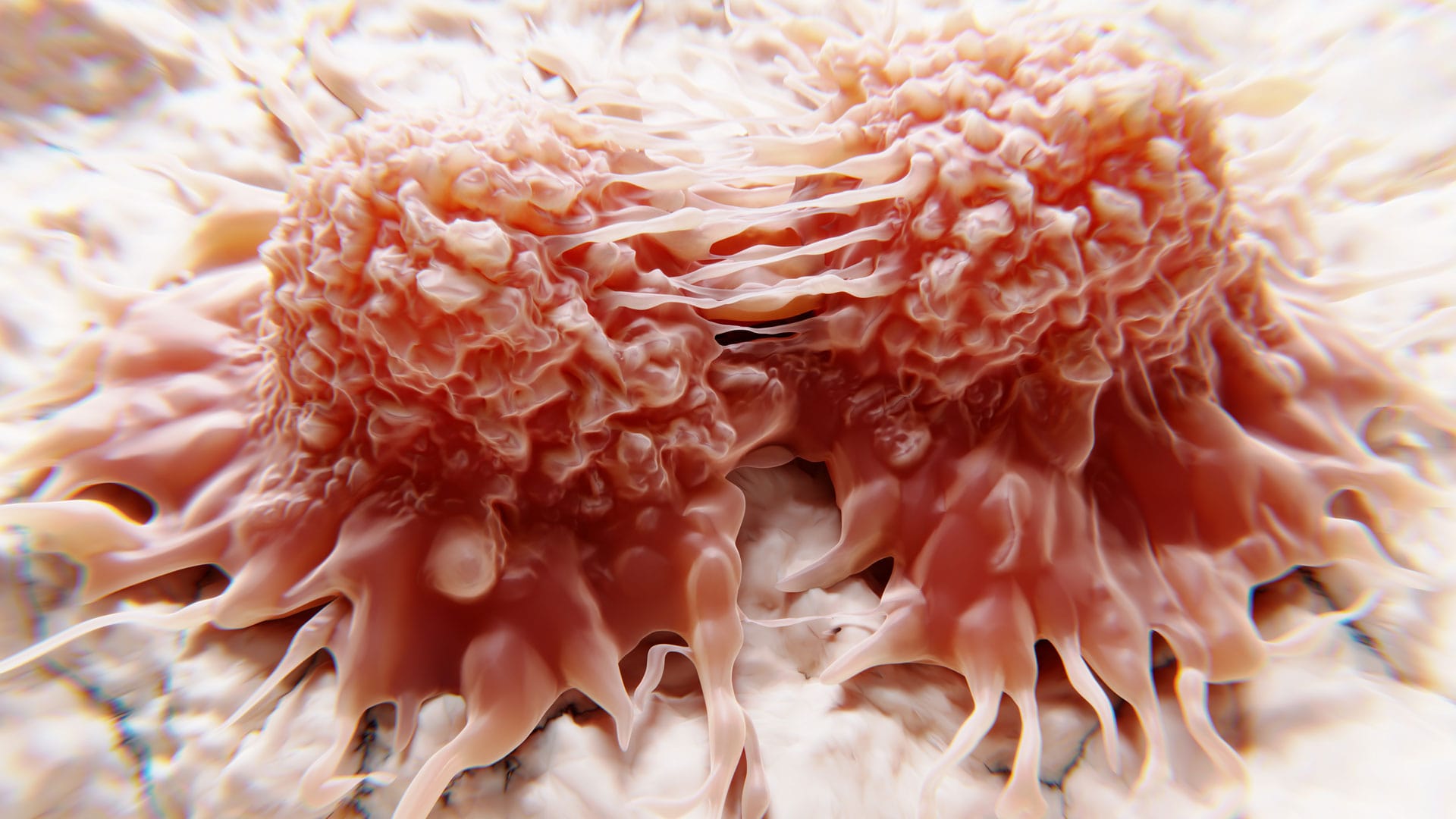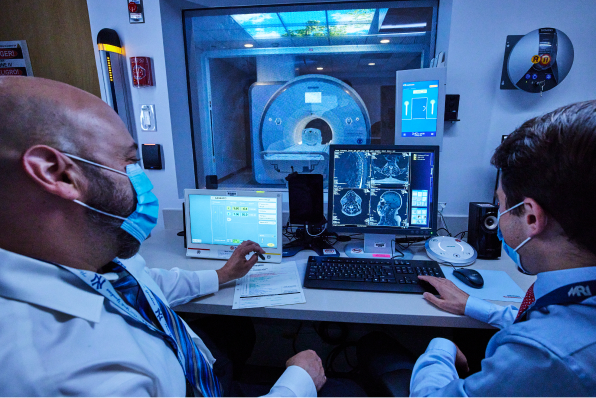CDTMI Research
The Cancer Dormancy & Tumor Microenvironment Institute’s (CDTMI) highly collaborative team includes top-tier investigators in basic, clinical, and translational research at Montefiore Einstein Comprehensive Cancer Center. Working collectively with intense focus, they are accelerating critical insights into cancer dormancy and death—and developing approaches to making cancer cells sleep, and then killing them.
The Hypothesis
Our hypothesis is that residual dormant cancer cells persist after therapy and/or in populated target organs long before clinical relapse due to early spread. This biology is likely applicable to hematological malignancies, as well, which are also a focus of the CDTMI. We posit that residual cancer cells are kept dormant by the same homeostatic signals and cell types that instruct adult stem and differentiated cells to maintain orderly repair and restricted growth patterns. We further posit that therapeutic, selective pressure may also activate adaptive mechanisms that overlap to some extent with spontaneously activated dormancy.
We envision that, as we age and/or perturb those homeostatic programs in ways that mimic aging-related damage, heterogeneous dormant residual cancer cell sub-populations may become reactivated and form metastases in recurrent solid cancer or systemic hematological malignancies. Therapies themselves may alter target organ niches affecting the rate of relapse.
The timing of these microenvironment-driven transitions may be further influenced by the transcriptional and/or epi/genetic "maturity" of DCCs. The programs at the CDTMI aim to solve this puzzle by identifying the host-specific and residual cancer cell-specific mechanisms that induce and maintain dormancy but, when disrupted, can fuel reactivation.

A Paradigm Shift
CDTMI’s focus on understanding the biology of residual cancer cells that persist in a dormant state, spontaneously or after initial therapy, represents a paradigm shift from the long-held notion that cancer is perpetually proliferating.
Applied in clinical studies, these findings are uncovering ways to maintain residual cancer dormancy, kill dormant cancer cells, and utilize markers to determine the dormant or active state of disseminated cancer cells.
Key research published by Dr. Aguirre-Ghiso and colleagues at CDTMI includes:
Models, mechanisms and clinical evidence for cancer dormancy
Aguirre-Ghiso, J. A. (2007). Models, mechanisms and clinical evidence for cancer dormancy. Nature Reviews Cancer, 7(11), 834-846. https://doi.org/10.1038/nrc2256
Dormancy signatures and metastasis in estrogen receptor positive and negative breast cancer
Kim, R. S., Avivar-Valderas, A., Estrada, Y., Bragado, P., Sosa, M. S., Aguirre-Ghiso, J. A., & Segall, J. E. (2012). Dormancy signatures and metastasis in estrogen receptor positive and negative breast cancer. PloS one, 7(4), [e35569]. https://doi.org/10.1371/journal.pone.0035569
Characterization of single disseminated prostate cancer cells reveals tumor cell heterogeneity and identifies dormancy associated pathways
Chéry, L., Lam, H. M., Coleman, I., Lakely, B., Coleman, R., Larson, S., Aguirre-Ghiso, J. A., Xia, J., Gulati, R., Nelson, P. S., Montgomery, B., Lange, P., Snyder, L. A., Vessella, R. L., & Morrissey, C. (2014). Characterization of single disseminated prostate cancer cells reveals tumor cell heterogeneity and identifies dormancy associated pathways. Oncotarget, 5(20), 9939-9951. https://doi.org/10.18632/oncotarget.2480
NR2F1 stratifies dormant disseminated tumor cells in breast cancer patients
Borgen, E., Rypdal, M. C., Sosa, M. S., Renolen, A., Schlichting, E., Lønning, P. E., Synnestvedt, M., Aguirre-Ghiso, J. A., & Naume, B. (2018). NR2F1 stratifies dormant disseminated tumor cells in breast cancer patients. Breast Cancer Research, 20(1), [120]. https://doi.org/10.1186/s13058-018-1049-0
Translating the science of cancer dormancy to the clinic
Aguirre-Ghiso, J. A. (2021). Translating the science of cancer dormancy to the clinic. Cancer research, 81(18), 4673-4675. https://doi.org/10.1158/0008-5472.CAN-21-1407
Bone marrow NG2+/Nestin+ mesenchymal stem cells drive DTC dormancy via TGF-β2
Nobre, A. R., Risson, E., Singh, D. K., Di Martino, J. S., Cheung, J. F., Wang, J., Johnson, J., Russnes, H. G., Bravo-Cordero, J. J., Birbrair, A., Naume, B., Azhar, M., Frenette, P. S., & Aguirre-Ghiso, J. A. (2021). Bone marrow NG2+/Nestin+ mesenchymal stem cells drive DTC dormancy via TGF-β2. Nature Cancer, 2(3), 327-339. https://doi.org/10.1038/s43018-021-00179-8
NR2F1 controls tumour cell dormancy via SOX9- and RARβ-driven quiescence programmes
Sosa, M. S., Parikh, F., Maia, A. G., Estrada, Y., Bosch, A., Bragado, P., Ekpin, E., George, A., Zheng, Y., Lam, H. M., Morrissey, C., Chung, C. Y., Farias, E. F., Bernstein, E., & Aguirre-Ghiso, J. A. (2015). NR2F1 controls tumour cell dormancy via SOX9- and RARβ-driven quiescence programmes. Nature communications, 6, [6170]. https://doi.org/10.1038/ncomms7170
An NR2F1-specific agonist suppresses metastasis by inducing cancer cell dormancy
Khalil, B. D., Sanchez, R., Rahman, T., Rodriguez-Tirado, C., Moritsch, S., Rodriguez Martinez, A., Miles, B., Farias, E., Mezei, M., Nobre, A. R., Singh, D., Kale, N., Sproll, K. C., Sosa, M. S., & Aguirre-Ghiso, J. A. (2021). An NR2F1-specific agonist suppresses metastasis by inducing cancer cell dormancy. Journal of Experimental Medicine, 219(1), [e20210836]. https://doi.org/10.1084/jem.20210836
TGF-β2 dictates disseminated tumour cell fate in target organs through TGF-β-RIII and p38α/β signalling
Bragado, P., Estrada, Y., Parikh, F., Krause, S., Capobianco, C., Farina, H. G., Schewe, D. M., & Aguirre-Ghiso, J. A. (2013). TGF-β2 dictates disseminated tumour cell fate in target organs through TGF-β-RIII and p38α/β signalling. Nature Cell Biology, 15(11), 1351-1361. https://doi.org/10.1038/ncb2861
Primary tumor associated macrophages activate programs of invasion and dormancy in disseminating tumor cells
Borriello, L., Coste, A., Traub, B., Sharma, V. P., Karagiannis, G. S., Lin, Y., Wang, Y., Ye, X., Duran, C. L., Chen, X., Friedman, M., Sosa, M. S., Sun, D., Dalla, E., Singh, D. K., Oktay, M. H., Aguirre-Ghiso, J. A., Condeelis, J. S., & Entenberg, D. (2022). Primary tumor associated macrophages activate programs of invasion and dormancy in disseminating tumor cells. Nature communications, 13(1), [626]. https://doi.org/10.1038/s41467-022-28076-3
VCAM1 confers innate immune tolerance on haematopoietic and leukaemic stem cells
Pinho, S., Wei, Q., Maryanovich, M., Zhang, D., Balandrán, J. C., Pierce, H., Nakahara, F., Di Staulo, A., Bartholdy, B. A., Xu, J., Borger, D. K., Verma, A., & Frenette, P. S. (2022). VCAM1 confers innate immune tolerance on haematopoietic and leukaemic stem cells. Nature Cell Biology, 24(3), 290-298. https://doi.org/10.1038/s41556-022-00849-4
Phenotypic heterogeneity of disseminated tumour cells is preset by primary tumour hypoxic microenvironments
Fluegen, G., Avivar-Valderas, A., Wang, Y., Padgen, M. R., Williams, J. K., Nobre, A. R., Calvo, V., Cheung, J. F., Bravo-Cordero, J. J., Entenberg, D., Castracane, J., Verkhusha, V., Keely, P. J., Condeelis, J., & Aguirre-Ghiso, J. A. (2017). Phenotypic heterogeneity of disseminated tumour cells is preset by primary tumour hypoxic microenvironments. Nature Cell Biology, 19(2), 120-132. https://doi.org/10.1038/ncb3465
An Embryonic Diapause-like Adaptation with Suppressed Myc Activity Enables Tumor Treatment Persistence
Dhimolea, E., de Matos Simoes, R., Kansara, D., Al'Khafaji, A., Bouyssou, J., Weng, X., Sharma, S., Raja, J., Awate, P., Shirasaki, R., Tang, H., Glassner, B. J., Liu, Z., Gao, D., Bryan, J., Bender, S., Roth, J., Scheffer, M., Jeselsohn, R., ... Mitsiades, C. S. (2021). An Embryonic Diapause-like Adaptation with Suppressed Myc Activity Enables Tumor Treatment Persistence. Cancer Cell, 39(2), 240-256.e11. https://doi.org/10.1016/j.ccell.2020.12.002
Dynamic CD138 surface expression regulates switch between myeloma growth and dissemination
Akhmetzyanova, I., McCarron, M. J., Parekh, S., Chesi, M., Bergsagel, P. L., & Fooksman, D. R. (2020). Dynamic CD138 surface expression regulates switch between myeloma growth and dissemination. Leukemia, 34(1), 245-256. https://doi.org/10.1038/s41375-019-0519-4
MLL3 loss drives metastasis by promoting a hybrid epithelial-mesenchymal transition state
Cui J, Zhang C, Lee JE, Bartholdy BA, Yang D, Liu Y, Erler P, Galbo PM Jr, Hodge DQ, Huangfu D, Zheng D, Ge K, Guo W. MLL3 loss drives metastasis by promoting a hybrid epithelial-mesenchymal transition state. Nat Cell Biol. 2023 Jan;25(1):145-158. doi: 10.1038/s41556-022-01045-0. Epub 2023 Jan 5. PMID: 36604594; PMCID: PMC10003829.
Leukemia Stem Cells as a Potential Target to Achieve Therapy-Free Remission in Chronic Myeloid Leukemia
Ito K, Ito K. Leukemia Stem Cells as a Potential Target to Achieve Therapy-Free Remission in Chronic Myeloid Leukemia. Cancers (Basel). 2021 Nov 20;13(22):5822. doi: 10.3390/cancers13225822. PMID: 34830976; PMCID: PMC8616035.
Undetectable Measurable Residual Disease is Associated with Improved Outcomes in AML Irrespective of Treatment Intensity
Bazinet A, Kadia TM, Short NJ, Borthakur G, Wang SA, Wang W, Loghavi S, Jorgensen JL, Patel KP, DiNardo CD, Daver NG, Alvarado Y, Haddad FG, Pierce SR, Nogueras Gonzalez GM, Maiti A, Sasaki K, Yilmaz M, Thompson PA, Wierda WG, Garcia-Manero G, Andreeff M, Jabbour EJ, Konopleva MY, Huang X, Kantarjian HM, Ravandi F. Undetectable Measurable Residual Disease is Associated with Improved Outcomes in AML Irrespective of Treatment Intensity. Blood Adv. 2023 Mar 8:bloodadvances.2022009391. doi: 10.1182/bloodadvances.2022009391. Epub ahead of print. PMID: 36884300.
Epigenetic and Pluripotency Aspects of Disseminated Cancer Cells During Minimal Residual Disease
Carlini MJ, Shrivastava N, Sosa MS. Epigenetic and Pluripotency Aspects of Disseminated Cancer Cells During Minimal Residual Disease. Adv Exp Med Biol. 2018;1100:1-18. doi: 10.1007/978-3-319-97746-1_1. PMID: 30411257.
NR2F1 Is a Barrier to Dissemination of Early-Stage Breast Cancer Cells
Rodriguez-Tirado C, Kale N, Carlini MJ, Shrivastava N, Rodrigues AA, Khalil BD, Bravo-Cordero JJ, Hong Y, Alexander M, Ji J, Behbod F, Sosa MS. NR2F1 Is a Barrier to Dissemination of Early-Stage Breast Cancer Cells. Cancer Res. 2022 Jun 15;82(12):2313-2326. doi: 10.1158/0008-5472.CAN-21-4145. PMID: 35471456; PMCID: PMC9203932.
Preleukemic and leukemic evolution at the stem cell level
Stauber, J., Greally, J. M., & Steidl, U. (2021). Preleukemic and leukemic evolution at the stem cell level. Blood, 137(8), 1013-1018. https://doi.org/10.1182/blood.2019004397
Learn More & Join Us in Solving the Problem of Cancer Dormancy and Relapse
Explore fundamental discoveries into the tumor microenvironment and metastases in our basic and translational research pages. Information about our work with the Bronx community appears in our Advocates & Community Involvement section.
We welcome you to our initiative, and hope you’ll consider making a donation to help support our work.
Join Us
The CDTMI is recruiting talented investigators in the biological and biomedical sciences with research programs aligned with the Institute’s vision. The call for faculty positions is open at the Assistant and Associate Professor levels. Interested candidates should send a summary of their research program and goals, as well as their curriculum vitae, to Nuri Panjaton at nuri.panjaton@einsteinmed.edu.









